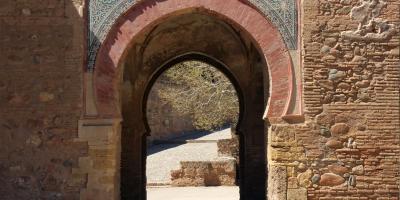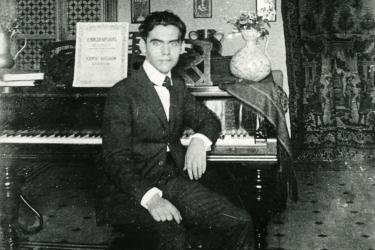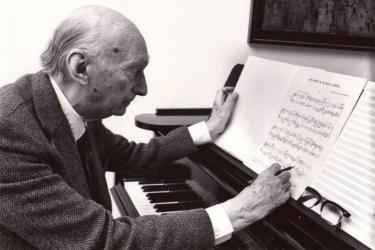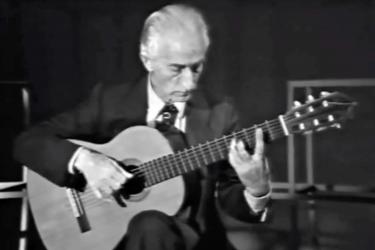
Manuel de Falla is one of the most notable composers of the generation. This essay is about Falla’s only guitar work, Homenaje pour Le Tombeau de Claude Debussy, his important involvement with the cultural movement in Granada, and the friendship with the poet Federico García Lorca, French composer Claude Debussy, and Ángel Barrios, the guitarist/composer of Granada.
Letters, friendship and mutual respect:
Lorca:
I have learned from the maestro Falla who is not only a great artist but also a saint, a model lesson. He used to say: “The people who do music job like us…” The pianist Wanda Landowska heard these humble and magnificent words of the maestro, which sounded to her like an insult. I’m with Falla. The poetry is like a gift. I do my job and fulfill my duty.
Poetry, music, and art, each of them is simply a job. At the same time, it is a job that requires a gifted talent. Thus, the artists must be hardworking while loathing any kind of exhibitionism.
Lorca was only 19 years old when he formed a friendship with Falla. Lorca admired Falla not only because of Falla's musical talent but also his quality as a person; Falla was very strict with the ethic, and his conduct was a good example to young Lorca.
Falla (on a letter to some friends):
If I say this poet and musician is a friend of mine, it is a half-truth because, in many aspects, he is one of my pupils whom I respect the most from all points of view. Moreover, with regards to folk music, he is an excellent collaborator. When God desires an artist of this quality to be born who is capable of not only technically assimilating those requirements for a job but also of going beyond the simple technical job, we see an enormous existing difference between what is a product of an education and what is a personal creation that emerges from the talent that is supported by the education.
Manuel de Falla: Homenaje pour Le Tombeau de Claude Debussy
The Spanish composer Manuel de Falla (1876–1946) used various types of compositional styles ranging from the romantic Spanish nationalism, the avant-garde and through to neoclassicism. However, Falla almost always kept the folkloric/flamenco elements as his most valuable resource throughout his career.
Two years after the death of Claude Debussy in 1918, Henri Prunières, a French musicologist and also the founder/editor of the music magazine La Revue Musicale, commissioned 6 o 7 leading composers including Falla to commemorate the death of this great French pianist/composer. At the same time, the famous guitarist Miguel Llobet, also a friend of Falla, repeatedly requested that Falla composed a guitar piece. Falla decided to kill two birds with one stone.
Homenaje pour Le Tombeau de Claude Debussy was composed during the years Falla was settling in Granada, after having lived in Madrid and Paris, with the help of his friend Ángel Barrios; Barrios helped Falla find accommodation in Granada and introduced Falla to the cultural circle of Granada. Ángel Barrios also helped Falla with the fingerings as Falla hardly could play the guitar.
According to José Rey de la Torre, well-known Cuban guitarist, a pupil of Llobet, when the work was almost finished, Falla, Llobet, and many writers and artists of Granada met up at Lorca’s house. There, Falla and Llobet worked together in a small room for the last refinement.
One of the notable characteristics of the avant-garde art is the avoidance of exact or literal reference which resulted in heavy use of metaphors, symbolism or deformation.
In this musical tribute, Falla evokes Debussy’s suggestive sensory music by quoting fragments of Soirèe dans Grenade (The Evening in Granada) from Estampes (1930) and La Puerta del Vino (The Wine Gate) from Préludes Book II (1913) . Both are related to Granada and based on the habanera rhythm. In particular, the inspiration for the latter came from a postcard of the Alhambra’s Wine Gate that Falla had sent him. According to Falla, Debussy intends to evoke a calm and bright hour of siesta in Granada.

Surprisingly, Debussy hardly knew Spain, except for from his only visit to San Sebastián (North Spain) for some hours! In both pieces, Debussy beautifully portrayed the atmosphere of Granada that he had never visited, using his comprehensive knowledge of Spanish music and brilliant intuition.
Falla was quoted as saying: There is not even one measure of this music borrowed from the Spanish folklore, and yet the entire composition in its most minute details conveys admirably what Spain is.
Falla’s this "Homenaje" was the last musical correspondence between these two geniuses.
Homenaje pour Le Tombeau de Claude Debussy closes with reference to Debussy’s Soirèe dans Grenade.







